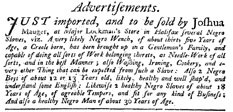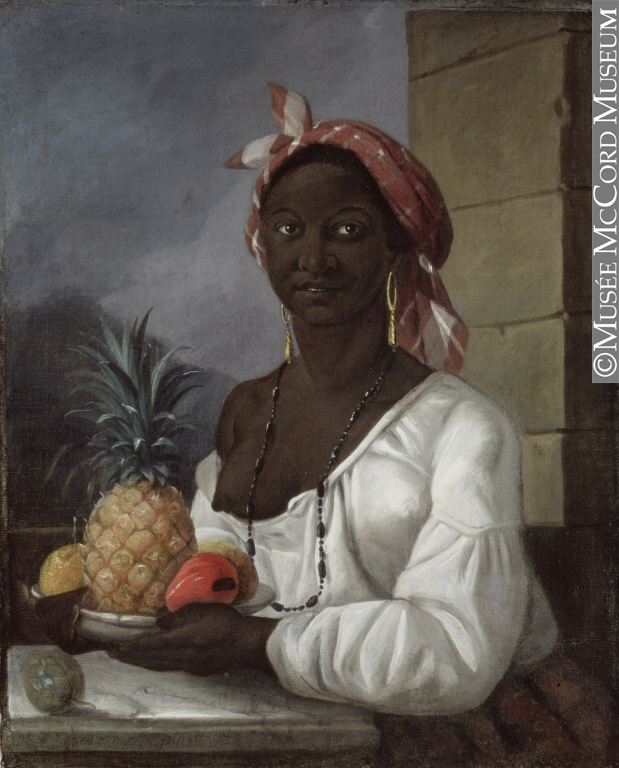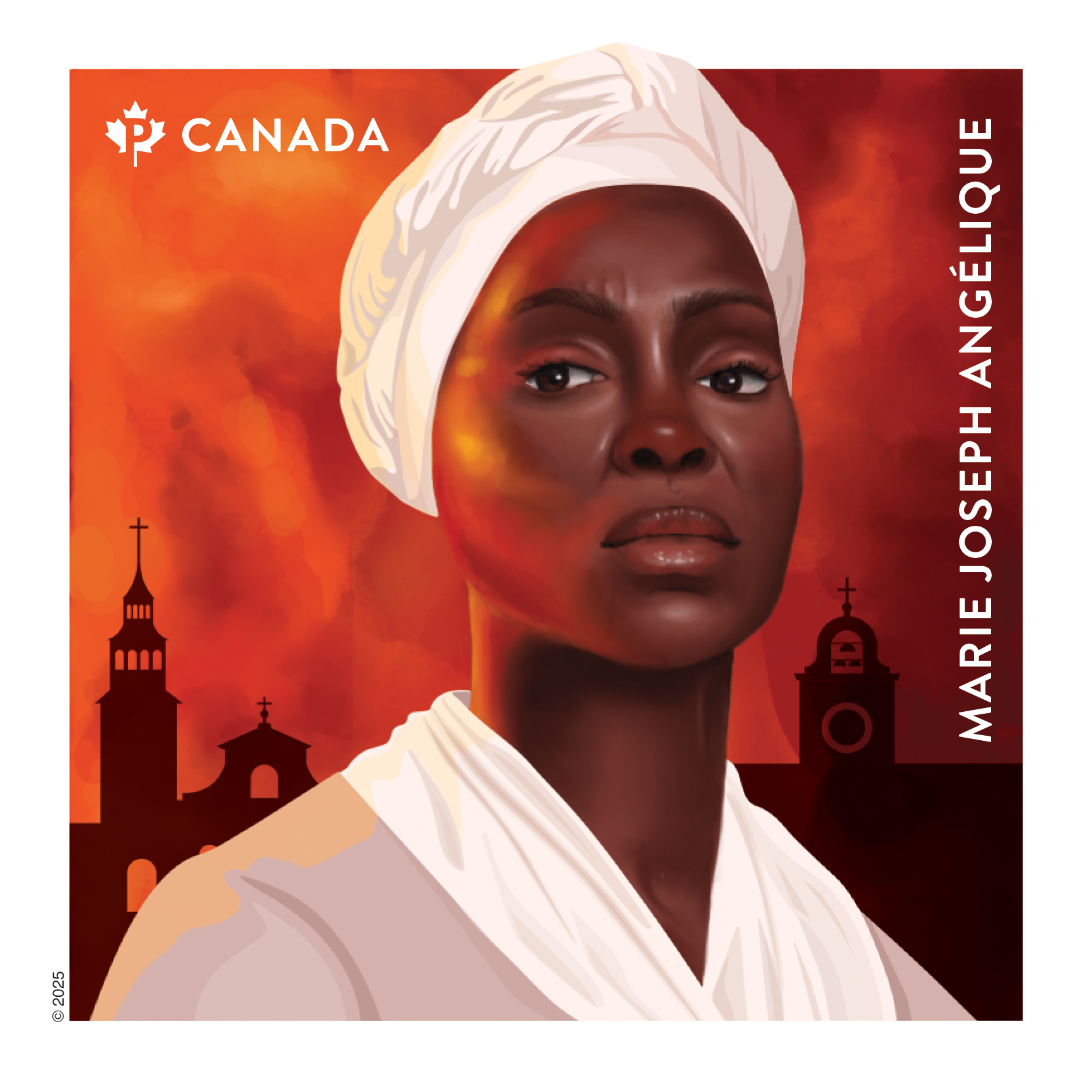The practice of slavery was introduced by colonists in New France in the early 1600s. The practice was continued after the British took control of New France in 1760 (see British North America.) For about two hundred years, thousands of Indigenous and Black African people were bought, sold, traded and inherited like property in early Canada. Slavery was abolished (made illegal) throughout British North America in 1834.
(This article is a plain-language summary of slavery in Canada. If you are interested in reading about this topic in more depth, please see our full-length entry on Black Enslavement in Canada.)

Enslavement in New France
Thousands of slaves lived in New France. Most of the slaves were from Indigenous tribes (see Enslavement of Indigenous People in Canada.) They were called panis. Panis means “enslaved Indigenous person.” In addition to Indigenous slaves, there were also African slaves in New France. Most of them came from Madagascar and Guinea. All the slaves in New France were chattel slaves. Chattel slaves were bought, sold, traded and inherited like property.
Did you know? The earliest record of African slaves in New France is the sale of a boy from either Madagascar or Guinea. He was about six years old. In 1629, the boy was brought to New France on a British ship as the chattel slave of an English trader named Sir David Kirke. A few years later, the boy was sold to a French clerk named Olivier Le Baillif. Then, the boy was either given or sold to a man named Guillaume Couillard. In 1633, the boy was baptized and given the name Olivier Le Jeune. The boy spent the rest of his life in New France.
Enslavement in British North America
The practice of slavery continued after the British took control of New France (see British North America.) Thousands of African slaves were brought to Canada by the United Empire Loyalists. They were people who remained loyal to Britain during the American Revolution. By the 1790s, approximately 1,200 to 2,000 African slaves lived in the Maritimes (New Brunswick, Nova Scotia and Prince Edward Island). Around 300 slaves lived in Lower Canada (Quebec). About 700 slaves lived in Upper Canada (Ontario).
Slave Labour: Forced to Work for Free
Most of the slaves in Canada worked as domestic servants (maids and butlers). They cooked, cleaned, and took care of children. Others worked for their owners at taverns, mills and butcher shops. Many worked as agricultural laborers, hunters, voyageurs, laundresses, printing press operators, fishermen, dock workers and hairdressers. Some were executioners. The work slaves did made money for their owners.
Treatment of Slaves
Slaves did not have any basic rights or freedoms. Therefore, slave masters could treat them cruelly. Some slaves were tortured and murdered. Enslaved women were often sexually abused. In addition to this, slave families were routinely torn apart. Members of slave families were sold to different slave masters. Some slave masters educated slave children and gave adult slaves land, money and property. And, they made sure that after they died their slaves would be freed. That said, it should not be forgotten that most slaves suffered terribly.
Resistance to Slavery
Many slaves resisted. Some left their owner’s property without permission. Others ran away to places like Vermont and New York. These states had banned slavery in the late 18th century.

Abolition of Slavery
Many people in Canada were against slavery. They were called “abolitionists.” An abolitionist is a person who wanted to make slavery illegal. One of the most important abolitionists in Upper Canada was Lieutenant-Governor John Graves Simcoe. In 1793, he helped to pass the Act to Limit Slavery in Upper Canada. It did not abolish slavery. However, it did make the importing of slaves illegal and it stated that all current slaves would be freed when they became 25 years old. The Act to Limit Slavery in Upper Canada was original. Neither Britain nor any of its colonies had passed an act to limit slavery before.
Soon after the Act to Limit Slavery in Canada was passed, slavery declined in Upper Canada, Lower Canada and the Maritime Provinces. It finally ended forever when the British Parliament passed the Slavery Abolition Act in 1834.

 Share on Facebook
Share on Facebook Share on X
Share on X Share by Email
Share by Email Share on Google Classroom
Share on Google Classroom













